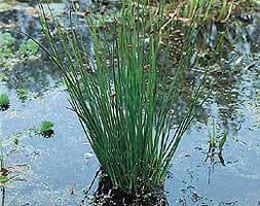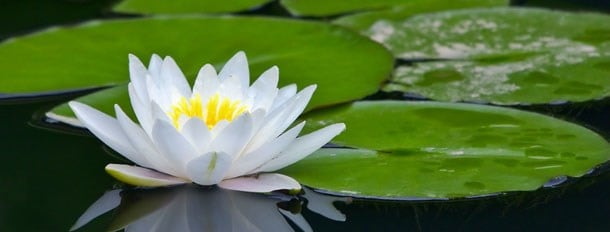How to plant up your pond
There’s nothing like a garden pond for bringing a garden to life during the summer months and now is an ideal time to add new plants and stock-up with fish. Choose a mild, sunny day and the job will be a pleasure. Most pond plants are easy to look after, requiring only the occasional word of encouragement to look their best. However, if you pick a brute that’s too vigorous for your pond, you’ll spend all your time hacking it back. The secret of success is to choose a mixture of floating and submerged plants that are suited to the size of your pond. Marginal plants provide the finishing touch and an adjacent bog-garden should be viewed strictly as an optional extra.
Floaters and sinkers

Colourful margins
In the shallows along the edge of a pond you can indulge yourself by combining a range of flowering plants that like to have their feet permanently wet. If you take into account their flowering times, you will be able to have colour and interest throughout the summer. In deeper water you can include delights such as the sweetly fragrant water hawthorn with exotic-looking, orchid-like flowers.
Planting pond plants
In ponds with liners, marginal plants should be planted in special aquatic containers with micro-mesh covered, lattice work sides. It is also important to use special aquatic compost which releases nutrients slowly – this prevents excess nutrients leaching into the water, encouraging algae and turning the pond green.- Position the aquatic plant so that it is at the same depth in the lattice basket as it was in its pot, then top up with aquatic compost and firm.
- Cover the surface of the compost with a layer of washed gravel to keep the compost in place and prevent fish and other pond creatures from disturbing it.
- Plunge the basket in a bowl filled with pond water until air bubbles are no longer coming from the compost. Then transfer the soaked container onto the marginal shelf of your pond.
Deep-water plants
Unless you own a pair of waders, positioning deep-water plants can be tricky. One method of doing so is to thread a couple of long cords through the mesh sides of the aquatic container. Then, with the help of a willing bystander, lift the plant and container by pulling the cords taught between you. Carefully, manoeuvre the container over the pond and lower it into position. Then pull out the cords from the safety of dry land.Positioning waterlilies

